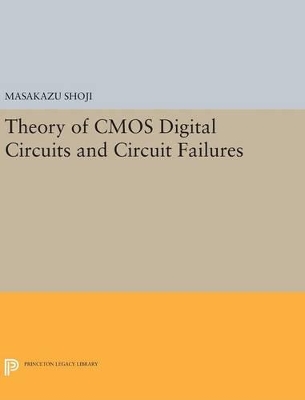Princeton Legacy Library
1 total work
CMOS chips are becoming increasingly important in computer circuitry. They have been widely used during the past decade, and they will continue to grow in popularity in those application areas that demand high performance. Challenging the prevailing opinion that circuit simulation can reveal all problems in CMOS circuits, Masakazu Shoji maintains that simulation cannot completely remove the often costly errors that occur in circuit design. To address the failure modes of these circuits more fully, he presents a new approach to CMOS circuit design based on his systematizing of circuit design error and his unique theory of CMOS digital circuit operation. In analyzing CMOS digital circuits, the author focuses not on effects originating from the characteristics of the device (MOSFET) but on those arising from their connection. This emphasis allows him to formulate a powerful but ultimately simple theory explaining the effects of connectivity by using a concept of the states of the circuits, called microstates.
Shoji introduces microstate sequence diagrams that describe the state changes (or the circuit connectivity changes), and he uses his microstate theory to analyze many of the conventional CMOS digital circuits. These analyses are practically all in closed-form, and they provide easy physical interpretation of the circuit's working mechanisms, the parametric dependence of performance, and the circuit's failure modes. Originally published in 1992. The Princeton Legacy Library uses the latest print-on-demand technology to again make available previously out-of-print books from the distinguished backlist of Princeton University Press. These editions preserve the original texts of these important books while presenting them in durable paperback and hardcover editions. The goal of the Princeton Legacy Library is to vastly increase access to the rich scholarly heritage found in the thousands of books published by Princeton University Press since its founding in 1905.
Shoji introduces microstate sequence diagrams that describe the state changes (or the circuit connectivity changes), and he uses his microstate theory to analyze many of the conventional CMOS digital circuits. These analyses are practically all in closed-form, and they provide easy physical interpretation of the circuit's working mechanisms, the parametric dependence of performance, and the circuit's failure modes. Originally published in 1992. The Princeton Legacy Library uses the latest print-on-demand technology to again make available previously out-of-print books from the distinguished backlist of Princeton University Press. These editions preserve the original texts of these important books while presenting them in durable paperback and hardcover editions. The goal of the Princeton Legacy Library is to vastly increase access to the rich scholarly heritage found in the thousands of books published by Princeton University Press since its founding in 1905.
